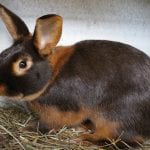Scientific Facts
| Common Name | Riverine Rabbit |
| Scientific Name | Bunolagus monticularis |
| Size | 33.7 – 46.9cm |
| Life Span | 2 – 3 years |
| Country of Origin | Cape Province(South Africa) |

Physical Description
Most individuals won’t have a simple moment attempting to distinguish one variety of rabbits from the other, though the Riverine rabbit is undoubtedly identifiable by the long brown streaks in its facial hair that flow from its jaws direct round to the rear of its ears. Among the characteristics that determine the Riverine rabbit cover big elastic ears and huge bumpy hind legs, the coat of the Riverine rabbit is essentially pale brown except for the abdomen and collar, which is commonly a soft colored coat. The female Riverine rabbit is the larger of the species, balancing at approximately 1.8kg typically, and most Riverine rabbits are nearly 340 – 470mm long.
The elongated ears of bunnies are the most expected evolution for recognizing predators. In enhancement to their noticeable ears, rabbits have powerful, long hindquarters and a small tailpiece. Each paw holds five toes (one lessened); rabbits run about on the tips of the toes in a way perceived as marching movement. Egg-shaped and full-bodied, wild rabbits are somewhat identical in body symmetries and posture. The smallest is the Brachylagus idahoensis (pygmy rabbit), at merely 7.9 inches (20 cm) in length and 0.9 pounds (0.4 kg) in weight, while the largest grow to 19.7 inches (50 cm) and more than 4.4 pounds (2 kg).
The coat is commonly soft and long, and its color varies through tones of buff, brown, and gray. Barrings are the two black-striped species from Southeast Asia and Pentalagus furnessi (black Amami rabbit) of Japan. The tail is normally a small whiff of hair, commonly brownish though white on the tip in the cottontails (genus Sylvilagus) of North and South America.
Geographical Range
This species is local to the central Karoo region of South Africa. It is correlated with the compact, irregular plants bordering the periodical streams. It is the sole natural excavating rabbit in Africa and is reliant on deep and soft muddy soils adjacent to the river routes for building firm breeding stations. Nearly 40–60% of the territory was wasted or shattered throughout the 1930s to 1970s due to farming enlargement on the seasonal creek flood fields across its population range.

Primarily, this species was identified to transpire in five areas towards the northwestern part of its scope, along the Renoster and Vis Rivers, as well as their streams near Calvinia. The absence of impressions figure during the ultimate 30 years, proposes that B.monticularis is now provincially lost in these areas. This is expectedly to be an immediate outcome of the vast horticultural extension along riverine marshes. A huge number of reviews from 1999–2013 across the population scale has increased our guesses of place and measurements of the several subpopulations, and classified a new southern distribution in 2004, which now comp[rises of three published subpopulations. The southern population is distributed within three catchments: Olifant, Breede, and Gouritz river systems.
Subpopulations are described as being built up groups of verified views along original, second- or third-order streams that are inside a maximum of 10 km of each other. If the collections of findings are longer than 10 km from each other, they are not considered as being from the corresponding subpopulation. Because of the inadequate data regarding dispersal capability of this species and the evidence that revealed masses, where home range investigations were sent out, recorded nearly one Riverine Rabbit for every 400 m of river length, 10 km between verified sightings was assessed as a sensible range to isolate subpopulations. A minimum of six findings was considered to serve a subpopulation (conceivably describing up to three breeding couples). Where less than six sightings transpired in separation from review information, these were thought to be a portion of the most adjacent subpopulation based on affinity by the rivers.
Habitat
The Riverine Rabbit resides compact riparian extension near the periodic streams in the central Karoo (Nama-Karoo shrubland). Particularly, it transpires in riverine plants on muddy soils next to seasonal rivers. The habitat is highly transformed and fragmented. Researches reveal the territory to be 61% uneven in specified fields. Views from the more freshly found southern Cape distribution cover new reports broadcasted over thirteen places (inside three subpopulations), of which nine localities are handled as nature reserves/game reserves.
The generality of Riverine Rabbit dwellers rests in the Upper Karoo Bioregion (nearly 80%), with approximately 1% in the Lower Karoo Bioregion, 3% in the Western Fynbos-Renosterveld Bioregion, 4% in the Trans-Escarpment Succulent Karoo Bioregion, and 12% in the Rainshadow Valley Karoo Bioregion. For the southern population observed within the Little Karoo, the appearance happens within the environmental standards as defined by Vlok and Schutte-Vlok, including Randteveld Habitat Type, Apronveld Habitat Type, Succulent Karoo Vegetation Type, Arid Renosterveld Habitat Type, and the Transitional Shrublands Vegetation Type.
Though, they are not confined to the muddy marshes in the southern Cape and can likewise happen in remote fields not affiliated with riverine farms. Further environment researches are needed. It must be perceived that these are comprehensive habitat standards, whereas subpopulations in the northern section of the distribution are constantly connected with muddy marshes and narrow zones of riverine farms near to periodic streams on a range that is dubious about suiting inside these broader territory types. They are, therefore, extremely dependent on the crucial support sections of Karoo riparian ecosystems.
These records act, though, provide an implication of the overall vegetation fabrication and production within several sections of its scope. The habitat scale has been measured as 12 ha. This species is obscure and night-loving, wasting morning hours in a hole underneath the riparian plant. They are solitary, and will solely be observed in breeding couples for brief intervals, or female-young sets for supporting purposes.
This species is primarily a portal yet is recognized to periodically feed on weeds throughout the early humid rainy season when small, green fields grow available. When surveying, they have been observed to display a distinct preference for Mesembryanthemaceae, Salsola glabrescens, Kochia pubescens, and Pteronia erythrochaetha. They are helpless to persist on dense damage or agriculturally modified environments but have been seen grazing on lucerne fields at midnight.
Common Behavior
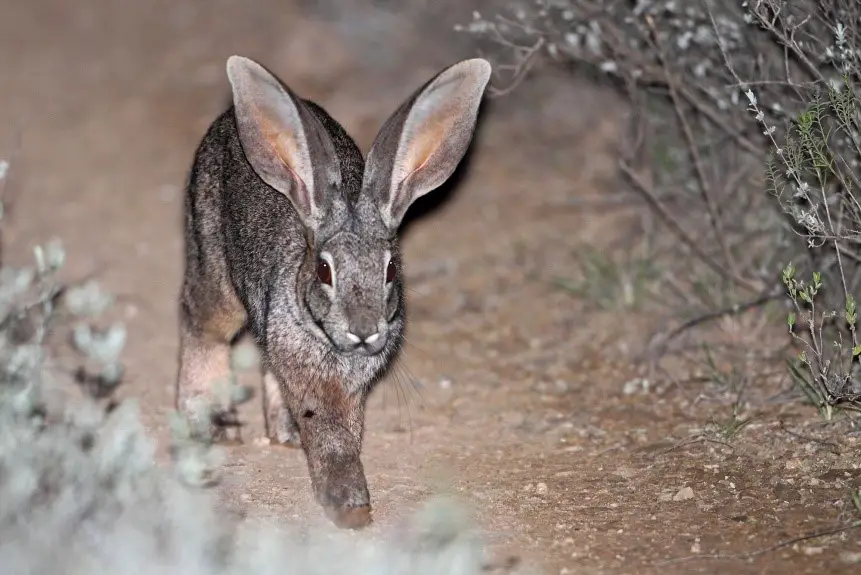
Riverine rabbits are nocturnal and solitary. They serve on their chosen leaves, grasses, flowers, and foods at night. Throughout the morning, they sleep in orders. It offers two varieties of excrements. While engaged in the evening, the rabbit will present solid excrements; and during the day, excrements are light, carried straight from the anus, and consumed. In this process, the riverine rabbit receives vitamin B, produced by bacteria in the rear abdomen, and minerals such as phosphorus and calcium are converted.
They are polygamous, but they breathe and skim for food solely. They have intra-reproductively particular home areas; the males’ habitat extends overhang insignificantly with those of the several females. Between August and May, females will build a cradle in a hole filled with weed and hair and pressed with twigs and soil. This nest is 4–6 inches in diameter, 10 inches long.
Diet and Feeding Habits
The riverine rabbit is typically identified for being a “searcher.” They consume riparian plants located near seasonal rivers in the Karoo Desert. This covers salt-loving shrubs such as the Lycium and salsola. They frequently devour weed hinging on if it is the damp season. Apart from their regular food consumption, they likewise use their day-time excrements, which are squishy and appear right from the anus. This is beneficial since their excretions carry vitamin created by the bacteria in the hindgut and includes minerals such as phosphorus and calcium.
Reproduction and Life Cycle
The riverine rabbit is one of the most unusual animals in the realm, and very few are recognized concerning its generative course other than that it has a polygamous coupling arrangement, where males couple with higher than one female. It carries its juveniles subterrene for security. The single offspring that the rabbit breeds are born altricial, or helpless, hairless, and visionless, and measures from 0.08 to 0.11 lbs. It is the uniquely African rabbit that carries its newborn clandestinely. The weak baby remains with the mother until it is competent to breathe on its own and defending for itself.
The low reproductive pace of merely one offspring per cycle is different from most other bunnies and has driven to efforts to raise figures of this endangered species. A breeding territory has been built at the De Wildt Cheetah and Wildlife Centre near Pretoria. These bunnies will couple with various exemplars and are the only identified rabbit species to build cradles for the infant. Somewhat unusually, two kittens may be produced at once.
The Riverine Rabbit has a development phase of approximately 35 days.
This rabbit has an existence in the native of merely three, infrequently four years.
Breeding
The Riverine rabbits are sluggish breeders, and when the breeding period begins, they may solely deliver one or two offspring; this is a surprisingly low number recognizing that the Riverine rabbits merely last for around three years.
Pet Care
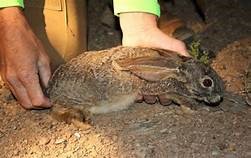
Housing
Although your rabbit will be out of its coop a lot of the course, it must have its sanctuary distant from the rest. This is where it will rest every evening and also where it can withdraw to when it senses exasperated or uncertain. This could be a huge, spacious enclosure or even a canine cage. Merely make assured your rabbit seems secure here.
The substrate you need for your rabbit will alter. Try with various kinds of bedding to recognize what your rabbit admires best. Standard choices are stripped paper, hay, and grass. Strive to refrain most lumber peelings, because they may be breathed by mishap. If you do utilize lumber peelings, refrain pine, cedar, and other scented shavings.
Considering your bunny resides indoors, it will require a litter crate. There isn’t one ideal litter crate for all bunnies. Your bunny may favor crates with blankets, and the length of the sides may likewise differ, since several may be too large or too flat for that. Begin with a feline litter crate that is large enough for it to rest inconveniently.
- You may consider taking a few crates. This approach, your bunny will be equipped to move around the entire apartment without requiring to the opposite point of the house to take its business.
- The variety of litter can likewise vary reliant on your bunny. Test with several sets. Popular examples include wood shavings that aren’t hay, straw, cedar or pine, shredded paper, and silica cat litter.
- Make positive it doesn’t bump, and it isn’t produced of mud. These matters may hurt your bunny if it consumes them or whiffs them in.
Feeding
Your bunny will demand its food container. Make convinced it’s formed of dense matter, such as ceramic. This benefits the bunny to have its container right side up because most bunnies prefer to tilt their food containers over. Furthermore, guarantee the surfaces are large enough to retain the food inside, however profound enough for your bunny to from consuming pleasantly.
Water containers frequently proceed with enclosures, but it’s yet a great approach to possess several. It is more typical for it to sip out of a pot, but these can be tapped over, contrary to a water container. Water containers can be bothersome for your bunny. If you notice this, change to a massive, ceramic water container.
The excellent meals for bunnies are hay and grass, which is what their abdomen is intended to concoct. By preference, provide the generality of your rabbit’s diet like raw green grass. It’s essential to adopt healthy hay. For most bunnies, timothy hay is the most desirable to employ.
- When your bunny chews hay, it gives the required staple for its digestive working.
- You can additionally place your rabbit’s litter crate with feed.
- Hay further presents a grand burrowing place for bunnies. These are frequently remarkably satisfying for rabbits, particularly if you sneak feasts, such as bits of Cheerios or apples in it. You can also utilize stripped paper as a fit for a burrowing point.
- Enhance your rabbit’s intake with a little measure of squeezed (each grind seems identical) grains and fresh vegetables and fruit. Traditional vegetables include cabbage, kale, Brussel sprouts, collards, cilantro, beet tops, carrot tops, bok choy, broccoli, and other greens
- Refrain letting the bunny endless access to grains, as it will presumably grow obese and sick. Additionally, avoid bunny foods with fruit in them, seeds, nuts, and bright colors. These are generally huge in carbohydrates and sugar.
- If you are uncertain of what sorts of vegetables to work, inquire your doctor or district bunny breeder for their opinion on the diet.
- Refrain vitamins as an addition to your rabbit’s intake. Strong bunnies don’t require them.
- Notwithstanding general knowledge, providing a bunny excessively numerous carrots can be extremely dangerous. They relish carrots as small feasts, though you must not supply carrots to bunnies every day. Weekly is customarily excellent.
Exercise
Merely similar to other home pets, your bunny requires playthings to have them occupied. Purchase a diversity of playthings for it, such as a munching toy or a mine with gaps to run into. You can create some yourself, such as a cardboard carton with bunny-sized pockets.
- An excellent handmade munch toy is a branch of raw Applewood tree. Make sure the branch is raw and clean before you present it to it.
- If you prefer different tree species, make positive it isn’t dangerous and give it to air-dry for at nearly 6 months before you present it to your bunny. Applewood, though, does not need this procedure. Just make convinced it’s clean and natural.
- Make sure you acquire playthings that hold various designs. Various bunnies appreciate diverse playthings.
Bonding With Your Rabbit
When you first take your bunny home, you require to observe how it associates with its surroundings. See where it runs to the toilet, how it responds to different individuals in your home, how it acts to the playthings, which toys it fancies and neglects, and how it behaves to the place in which you settle it. Don’t fret if it merely rests in a nook for several moments, then feeds, then rests down when you initial arrange it. Do not interrupt it, no concern about what it appears. It is adapting to its current conditions. Throughout these first several days, let it be in its enclosure. Regularly, gain a moment to squat close to the bunny and communicate to it in a faint, soft sound.
Once your rabbit appears to become accustomed to you, you can allow it outside of its enclosure. Shut all the access to the room its enclosure is in. If one access doesn’t hold a door, obstruct it for the event being. Succeeding, permit your bunny out of its enclosure. Don’t hoist it out, merely unlock the entrance of it and allow it to leap out on its own. Remain in the center of the chamber, making something calm, such as writing, listening to calm music, or reading. Have some herbs with you in the event it becomes inquisitive.
Once your bunny gets out of the enclosure, allow it to bounce around on its own. Don’t get it to proceed to you, and don’t walk around excessively. It will ultimately bounce over to you, interested concerning what you’re making and who you are. When it appears, permit it to smell you, then give a tiny bit of legume, roughly the size of a thumbnail. If it looks wary, remain calm, and speak softly to it. Don’t actuate too hastily since you may frighten it.
If your rabbit needs some moment getting to you, ready for it to behave so. If it goes close and it doesn’t get the herb, solely place it down and move back to your venture. Neglect it until it finally proceeds to the food. When it appears, let it pick the bit of vegetable you set down. After it consumes the first part, give it added a tiny bit. If it gets over to consume it then, remain quiet and speak inaudibly to it.
Once it reaches up to you and grants you serve it, gradually begin petting it on its head following it is stopped chewing. If it remains tranquil or drops its head to the area, keep progressing. If it winces or moves away, pause and move back to your venture. You need to remain for it to advance one more chance and strive again. If it snaps you, yell noisily. This will allow it to understand that you are in distress, which will make it apparent to it that it pained you.
If you are holding a difficult course connecting with your bunny, don’t lose hope! Shift between giving your bunny a tiny portion of legumes, petting your rabbit and snubbing it entirely. If it nears you, attempt serving it again. If it whacks you, it requires care. Pet it if it makes this. Repeat this every someday until you grow connected with your current pet bunny.
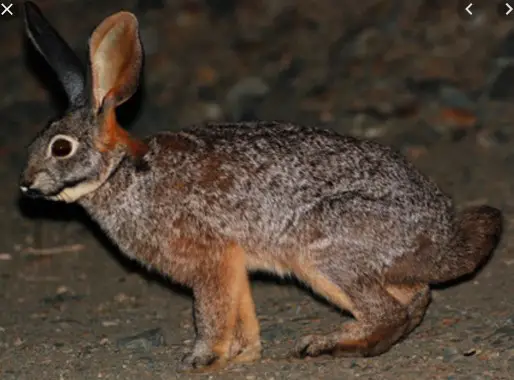
Keeping it Healthy
When you purchase a bunny, you need to make certain you identify a doctor who can afford the kind of attention it might demand. Locate a doctor who has possessed loads of expertise with bunnies and small mammals, as their attention is distinct from that of felines and canines. Then, once you have your rabbit, bring it for an examination to make convinced it is fine. Drive your rabbit for routine examinations, just similar to other family pets. This will make it more manageable if you have urgency with your bunny, considering the vet will already comprehend it.
Make sure each one in your home comprehends how to pull up a rabbit perfectly. To pull a bunny up accurately, ladle the bunny up utilizing one arm near the surface of the body with the opposite hand beneath the back end. As you hoist it, carry the rabbit toward the side of your body to provide it extra comfort. Bunnies can grapple when they get nervous. They may attempt to flee from what they perceive as a scary circumstance. They can crack their own spine in the manner, often experiencing a lethal disease, if plucked up clumsily.
Before you purchase a rabbit, you have to guarantee no infliction can get to the bunny when it leaps around your home. Bunnies will bite cables if they notice them. Make certain your electrical fibers, network cables, and several other chains are concealed or far. Obtain synthetic wire or line cover or pipes to take them out of the access.
- You can likewise run circuits and cord behind fittings or safely along with the partition away of your rabbit’s range.
- Never work cords or lines or fibers beneath the matting. This can induce a flare.
Although bunnies seem like charming tiny knots of fur, they don’t relish being caressed and squeezed excessively. Bunnies are more inclined to be frightened of being held, particularly if you bend over then and attempt to pull them up. Because they are victim creatures, this prompts them to be tracked by falcons and other birds, which can scare them.
- Several bunnies will stand being petted for lengthy periods, while most will appreciate it for brief points. Periodically, bunnies will even bite you when you halt. This will alter from mammal to mammal. Assess your bunny’s character and obtain the most dependable method to address and pull it up.
Availability
It is an exceptional and unusual matter to perceive the Riverine rabbit. The beautiful riverine rabbit can infrequently be observed in the wilderness. There are likewise striking regions in South Africa to view them, such as in the Sanbona Wildlife Reserve (adjacent to Montagu, and three hours from Cape Town) and in the Western Cape, the Anysberg Nature Reserve (nearly several hours from Cape Town, in the Klein Karoo).
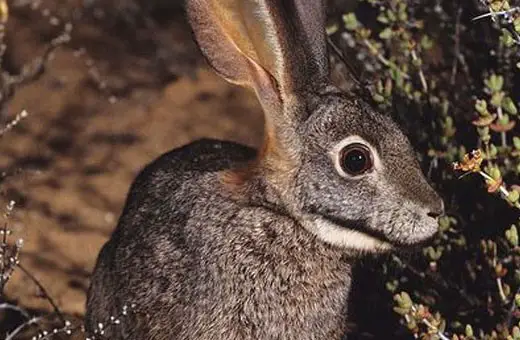
Endangerment
Extent
The riverine rabbit is a breed that is in severe threat of extinction. In 1981, it was originally identified as an endangered species. Based on the IUCN Redlist, it is presently listed under the most critical level of endangerment (apart from extinction), which is perilously endangered. It has a distribution of solely approximately 500 adult bunnies and 1500 overall, which both proceed to sink. Also, the IUCN Redlist foretells extended distribution modification, in the pressing tomorrow.
Causes
The slump in the distribution is mainly because of the modification of its environment, as over half of it has been declared inadequate to maintain the bunny since 1970. The basis for this is chiefly due to the control of the property for farming, creating the bizarre required setting of the riverine rabbit to be slaughtered.
The scope of the livable region remains to sink, and the logic for this continuous bombardment of the rabbit’s territory is the system of breeding animals for business ideas in the field, creating the conditions to be converted to work this arrangement.
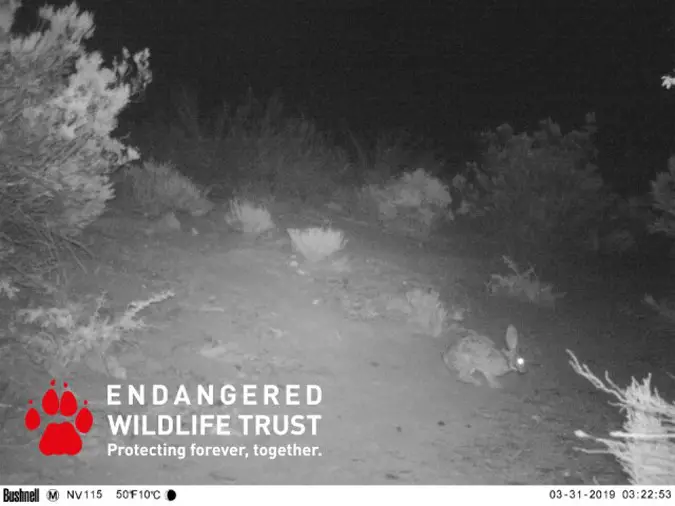
Added continuous menace to the bunny is how the segregated crowds are split up because areas in the range regularly have a barrier that is impenetrable to this species, created to put out jackals. A further warning to the species is observed in how the residual property left that maintains it is being ravaged by weather variation. Other origins for distribution conversion are detected in how the bunny is captured for recreation, meals, and acquisition, and additionally in how the bunny has usually descended into ambushes installed on fields, to arrest other annoying creatures.
Conservation
The Endangered Wildlife Trust has placed a Riverine Rabbit Programme to control and regulate the Riverine Rabbit Conservation Project to sustain intimate connections with landlords and preservation professionals and to guarantee the continuance of the riverine rabbit and its environment.
Additional actions are:
- The endowment of lawful maintenance fields in riverine rabbit territories.
- The endowment of more separate protection domains such as managements and protection guidance localities.
- Comparison of existing knowledge and data. Administration of canine predation on fields. Environment reconstruction.
- The current exploration of the riverine rabbit in the Sanbona Wildlife Reserve and Vaalkloof Private Nature Reserve are definite indications for the continuation of this species.
FAQs
How many riverine rabbits are left?
In reality, with solely approximately 400 exemplars remain in the wild and a ‘critically endangered’ recording from the IUCN dangling over its fuzzy head, the riverine rabbit passes as one of the most unusual mammals in southern Africa.
Where does the riverine rabbit live?
Its environment sectors are sultry and mundane, while its terrestrial biomes are wilderness or dune and scrub woodland.
Are Bunnies going extinct?
It may shock you to discover that several breeds of bunnies and rabbits are amongst the most threatened mammals on Earth. Out of 63 native species, 22 are regarded near threatened to critically endangered by the International Union for Conservation of Nature (IUCN).
What is a group of rabbits called?
A group of rabbits is identified as a nest or a colony (or, infrequently, a warren, however, this more generally applies to where the rabbits dwell). A group of baby bunnies generated from a single coupling is attributed to as a litter, and a group of domestic rabbits living collectively is sometimes named a herd.
Is Rabbit a rodent?
Rabbits, pikas, and hares are different from rodents in several regards; for instance, they possess four incisor teeth (rather than two), and they are about entirely herbivorous (whereas various rodents also consume meat). Rabbits are social drilling animals with elongated ears, long rear limbs, and a small white fluffy tail.
